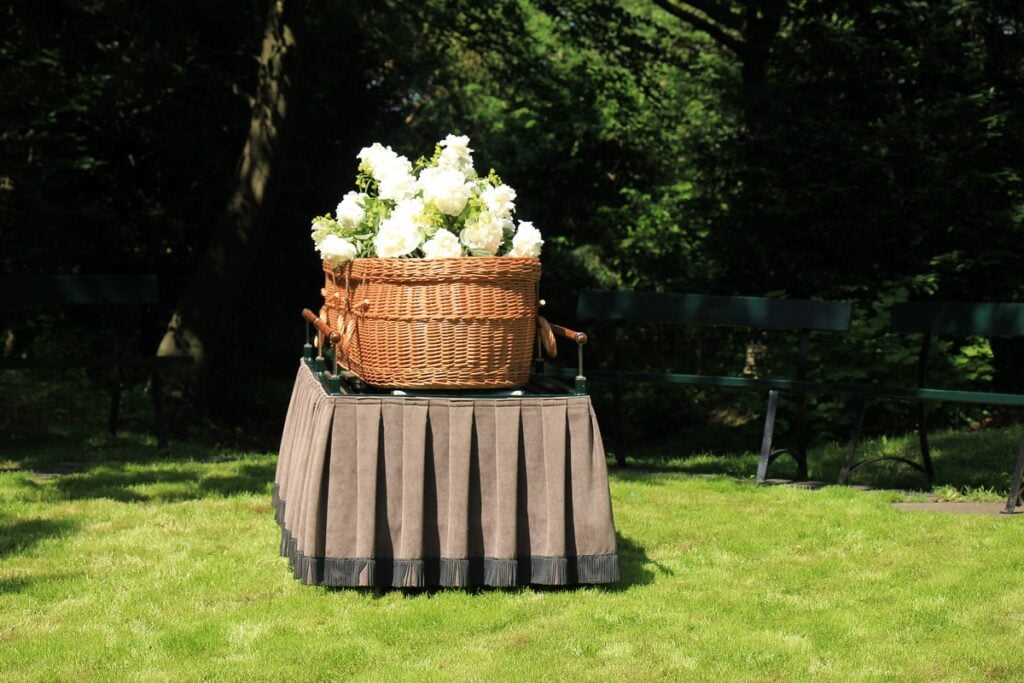Green burials are a powerful way to honor life while preserving the planet. This eco-friendly practice goes beyond tradition, offering meaningful benefits for individuals who value sustainability. Here’s a deeper dive into how green burial positively impacts the environment, helping both nature and communities thrive.
1. Reduces Carbon Footprint
Traditional burial practices generate significant carbon emissions, from transporting the body to manufacturing elaborate caskets and vaults. These processes often rely on fossil fuels. Green burials, by contrast, involve local services, biodegradable materials, and natural burial techniques, all of which reduce emissions. Additionally, green cemeteries avoid energy-intensive practices like landscaping maintenance, such as mowing and fertilizing, which further decreases their carbon footprint.
2. Eliminates Harmful Chemicals
Conventional embalming uses chemicals like formaldehyde, methanol, and glutaraldehyde, which can leach into the soil and groundwater after burial, posing risks to both ecosystems and human health. Green burials skip embalming entirely, relying on refrigeration or dry ice for body preservation when needed. This ensures the burial process remains chemical-free and safe for the surrounding environment.
3. Conserves Natural Resources
Traditional burial requires large amounts of wood, metal, concrete, and synthetic fabrics to construct caskets, liners, and vaults. Many of these materials are not biodegradable, adding strain to the planet’s finite resources. Green burials use biodegradable caskets or burial shrouds made from materials like bamboo, wicker, untreated pine, or organic cotton. By choosing natural materials, families minimize waste and reduce resource depletion.
4. Protects Wildlife Habitats
Green burial grounds often serve a dual purpose as nature reserves or wildlife sanctuaries. Instead of sprawling cemeteries dominated by manicured lawns, these spaces preserve natural landscapes where birds, insects, and small mammals can thrive. Trees and native vegetation are allowed to flourish undisturbed, creating vibrant ecosystems that support biodiversity.
5. Promotes Soil Health
Decomposition is a natural process that contributes to healthy, nutrient-rich soil. Biodegradable caskets and shrouds allow the body to return to the earth organically, enriching the soil with carbon, nitrogen, and other essential nutrients. Unlike conventional burials, which seal remains in non-degradable containers, green burials encourage the natural breakdown of organic matter, benefiting trees, plants, and microorganisms.
6. Reduces Energy Use
Cremation has become a popular choice, but it’s an energy-intensive process requiring temperatures of over 1,400°F for several hours. This energy consumption contributes to greenhouse gas emissions. Traditional burials, meanwhile, require manufacturing processes for caskets, vaults, and tombstones, all of which consume energy. Green burials rely on simplicity, avoiding the need for industrial energy inputs and focusing on minimal environmental impact.
7. Enhances Water Quality
In conventional cemeteries, concrete vaults, chemical-laden embalming fluids, and synthetic materials can pollute groundwater. Rainwater filtering through these materials carries toxins into local water sources. Green burials, which use only natural and biodegradable materials, prevent these contaminants from entering water systems, protecting the health of nearby communities and ecosystems.
8. Encourages Native Plant Growth
Many green burial sites incorporate landscaping practices that emphasize native vegetation rather than ornamental lawns or exotic plants. Native species require less water and no chemical fertilizers or pesticides, making them more sustainable. These plants also provide habitats for pollinators like bees and butterflies, contributing to healthier ecosystems and restoring natural balance.
9. Preserves Open Spaces
As urban development expands, preserving green spaces becomes increasingly critical. Many green burial cemeteries are part of conservation initiatives that protect forests, meadows, and wetlands. Families who choose green burials contribute to land preservation efforts, ensuring that these areas remain undeveloped and accessible to future generations. Some green burial sites are also designed as public spaces for hiking, birdwatching, or quiet reflection, blending memorialization with nature conservation.
10. Aligns With Circular Ecosystems
In nature, every organism eventually becomes part of the earth again, contributing to the cycle of life. Green burial embraces this philosophy, allowing the body to decompose naturally and return to the soil. This process nourishes plants, feeds microorganisms, and perpetuates the ecosystem’s balance. By choosing a green burial, individuals take an active role in supporting the planet’s life cycle, even after death.

